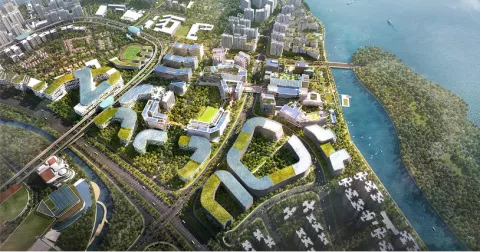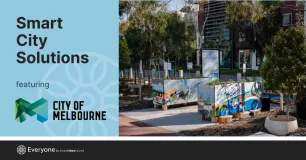
The Punggol Digital District (“PDD”) was listed as one of the projects in the Singapore’s Smart City Action Plan in the Monitoring and Evaluation Report of the ASEAN Smart Cities Network (ASCN), published on 21st of September 2022.
Below are five important lessons from this project.
1. The Imperative of Long-Term Planning
In Singapore, the city planning agency, the Urban Redevelopment Authority (URA), typically conducts long-term planning for a period of 10 to 15 years to review and update the Master Plan which guides the development and land use of the country.
Long-term planning enables the introduction of emerging technologies and provides the opportunities for innovative companies to be part of the process.
Hence, the development of smart cities must be a long-term planning process, typically over 10 to 15 years, reviewed every 5 years, for an area identified by the city government.
2. A Holistic Approach with Public-Private-People Partnership
The planning of PDD or any smart city, would incorporates various aspects of city planning such as transportation, housing, and sustainability. Hence, a holistic approach would be mandatory, involving the private sector for the digital infrastructure like high-speed Internet and digital connectivity for the entire area.
PDD would have an industry developer, JTC and an academic institution, Singapore Institute of Technology (SIT) to collaborate in research and development of innovative solutions which can be test-bedded on site.
As an integrated site with the Punggol community, resident engagement can be fostered thought the use of digital platforms for constructive feedbacks and better decision making.
3. Opportunities for High-Value Investments with Jobs
PDD has been positioned as a digital innovation hub. In 2021, it was reported that the first batch of four companies with focus areas in blockchain, cybersecurity, robotics and smart living solutions, would establish their presence in PDD with the creation of 2,000 technology jobs.
When completed and operational from 2024 onwards, PDD is expected to attract more investments from global companies to enable the creation of an estimated 28,000 high-value jobs.
4. Development of the Innovation Ecosystem
The strategic intent of the PDD is to develop an innovation ecosystem as follows:
- A Shared Infrastructure which would provide a common technology platform for JTC, SIT to share infrastructure and facilities, such as data centers, smart buildings, and digital services. This would enable all organizations located there to collaborate more effectively and reduce costs.
- Talent Development with R&D: PDD would create opportunities to collaborate on R&D of new innovative technologies and talent development initiatives, such as training programs and apprenticeships.
- Community Engagement: PDD would provide opportunities to engage with the local community, such as through public events and educational programs. This would help tobuild a strong sense of community ownership and support for the development of the digital district, to improve the quality of life with economic vibrancy and sustainable development.
5. A Model and Catalyst for Smart Cities and Communities
The Smart City Action Plans (SCAPs) from representing cities in ASCN provide the opportunity for cities in ASEAN to be aware of the type of projects done. Singapore opted to include the PDD project into their SCAP to illustrate its approach to the development of an area as a model and catalyst to spur innovations and create jobs as a Smart Nation.
Other smart cities with similar aspirations could learn from this Singapore example.
Reach out to Kok Chin Tay for more information about our activity in the ASEAN region.



